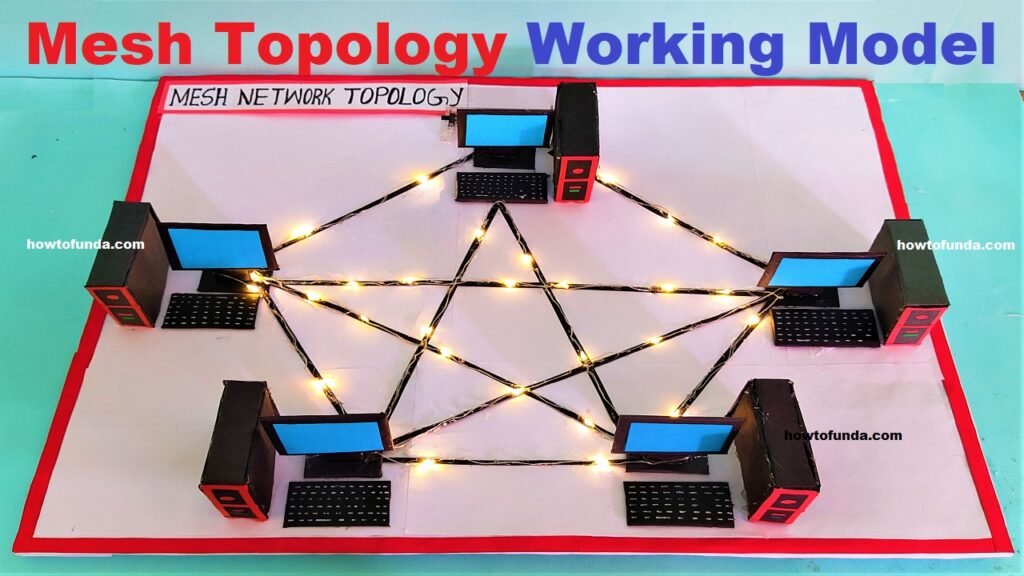Mesh topology is a type of network topology used in computer networks where every device (node) is directly connected to every other device in the network.
In a mesh network, data can take multiple paths to reach its destination, making it a highly redundant and fault-tolerant topology.
Mesh networks are commonly used in various applications, including local area networks (LANs), wide area networks (WANs), and wireless networks.
#meshtopology #computernetwork #workingmodel #scienceexhibition #sciencefair #scienceproject #howtofunda #networktopology

Advantages of Mesh Topology:
- Redundancy and Reliability:
- Mesh topology offers a high degree of redundancy. Since every node is connected to every other node, even if one link or node fails, the network can still operate with minimal disruption. This makes it highly reliable.
- Scalability:
- Mesh networks are easily scalable. Additional nodes can be added without affecting the overall structure, allowing for expansion as the network’s requirements grow.
- High Performance:
- Mesh networks can potentially provide higher performance levels, especially in terms of bandwidth, due to the multiple paths available for data transmission. This can be crucial in scenarios where large amounts of data need to be transmitted quickly.
- Security:
- Mesh networks can be more secure than other topologies because of the point-to-point connections. Information is only sent directly to its intended destination, reducing the risk of interception.
- Isolation of Issues:
- If a problem arises with one node or link, it doesn’t necessarily affect the entire network. This isolation of issues makes troubleshooting and maintenance easier.
Types of Mesh Topology:
- Full Mesh:
- In a full mesh topology, every node is directly connected to every other node. This results in the highest level of redundancy and reliability. However, it can be resource-intensive and may not be practical for large networks.
- Partial Mesh:
- A partial mesh topology is a compromise between a full mesh and other topologies like star or bus. In a partial mesh, only some nodes have direct connections to every other node, while others have connections to only a few.
- Hybrid Mesh:
- Hybrid mesh topology is a combination of mesh and other topologies. For instance, it might combine elements of a mesh network with elements of a star network, allowing for a flexible and customized setup.
Disadvantages of Mesh Topology:
- Complexity and Cost:
- Implementing a full mesh network can be complex and expensive due to the high number of required connections. Partial mesh networks can be more cost-effective but may sacrifice some redundancy.
- Cabling and Infrastructure:
- The physical cabling and infrastructure required for mesh topology can be extensive, especially in full mesh configurations.
- Maintenance and Management:
- Managing and maintaining a mesh network can be more challenging compared to other topologies. Keeping track of multiple connections and troubleshooting can be time-consuming.
- Limited Scalability in Full Mesh:
- Full mesh networks may have limitations in terms of scalability due to the sheer number of required connections.
Step by Step video instructions on making of Mesh Topology working model
Conclusion:
Mesh topology is a powerful networking architecture known for its redundancy, reliability, and fault tolerance.
While it may have some drawbacks in terms of complexity and cost, its advantages make it a preferred choice in critical applications where high availability and reliability are paramount. Whether in small-scale LANs or large-scale WANs, mesh topology continues to play a crucial role in modern networking.

